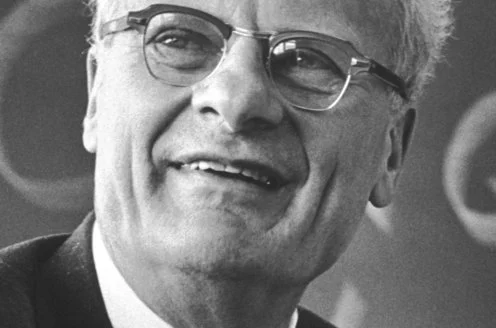Hans Albrecht Bethe was a German-American nuclear physicist, and Nobel Prize winner in category of Physics.
Early life
Hans Bethe was born on July 2, 1906, in Strasbourg, Germany. Hans’ father was a physician, and his mother was an accomplished musician. Hans was very talented child. He had above average mathematical understanding as a child. He could compute square roots at the age of four, completely understood fractions by the age of five. By the age of fourteen he had taught himself calculus. He also learned to write very early and. The interesting fact is that he wrote from left to right on one line, and then from right to left on the following line. He later found out that this was a style of writing usual for some parts of the ancient Greece.
Education
After completing his high school education in 1924, Hans Bethe studied physics at the University of Frankfurt, and later on went to earn his doctorate from the University of Munich.
Achievements
Bethe, whose mother was Jewish, fled Germany in 1933 and settled in the United States, where he became a professor of physics at Cornell University in 1935. He bacame a U.S. citizen in 1941. Hans Bethe was a part of the Manhattan Project, where he was a director of the theoretical physics division. His job was to calculate the efficiency of a nuclear weapon and what effects it would produce. Bethe made significant contributions to the design and feasibility of the plutonium and uranium atomic bombs.
At the end of the World War II, Bethe worked on the development of the hydrogen bomb. Although Bethe hoped that it would be impossible to create the hydrogen bomb, he did see the project through to its end.
Hans Bethe received the Nobel Prize in Physics in 1967 for his contributions to the theory of nuclear reactions, especially his discoveries concerning the energy production in stars.
Later life
Bethe became politically active later in his life. He mostly campaigned for the peaceful use of nuclear energy. He died of congestive heart failure on March 6, 2005 in Ithaca, New York. He was 98 years old.
Hans Bethe quotes
“If we fight a war and win it with H-bombs, what history will remember is not the ideals we were fighting for but the methods we used to accomplish them. These methods will be compared to the warfare of Genghis Khan who ruthlessly killed every last inhabitant of Persia.”
“Finally I got to carbon, and as you all know, in the case of carbon the reaction works out beautifully. One goes through six reactions, and at the end one comes back to carbon. In the process one has made four hydrogen atoms into one of helium. The theory, of course, was not made on the railway train from Washington to Ithaca… It didn’t take very long, it took about six weeks, but not even the Trans-Siberian railroad has taken that long for its journey.”

